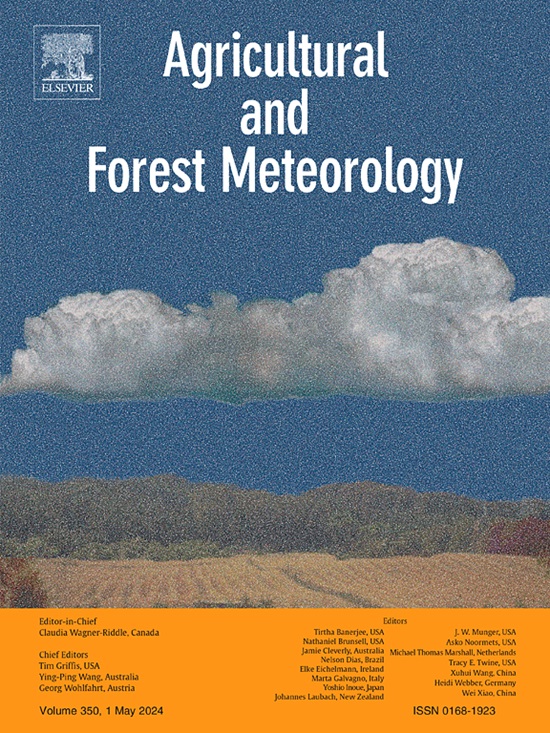Reductions in nitrous oxide emissions in diverse crop rotations linked to changes in prokaryotic community structure
IF 5.6
1区 农林科学
Q1 AGRONOMY
引用次数: 0
Abstract
Diverse crop rotations are increasingly recognized as key to address the global food crisis and improve environmental sustainability, including reducing nitrous oxide (N2O) emissions. However, the specific effects on N2O emissions of different crops in these rotations and the underlying incidence on microbial processes remain underexplored. In a six-year field study, we compared N2O emissions from traditional wheat-maize rotation with diverse rotations, including legumes (peanut, soybean), ryegrass, sorghum, and sweet potato. We also examined the microbial functions associated with nitrogen cycling based on functional annotation of prokaryotic taxa (FAPROTAX) analysis. Our study showed that diversified crop rotations with reduced synthetic fertilization and irrigation can reduce N2O emissions by 23 %-49 % compared to conventional rotations. These reductions were supported by increases in soil organic carbon, soil carbon/nitrogen ratio and decreases in the relative abundance of denitrifying microorganisms, particularly observed in rotations with soybean and sweet potato. However, the spring maize and peanut-based rotation had higher emission factors than traditional wheat-maize rotation due to lower initial crop nitrogen uptake and lower nitrogen use efficiency, respectively. Changes in the microbial community structures of nitrification and denitrification processes, including increased activity of ammonia-oxidizing bacteria MND1 and archaea Candidatus Nitrososphaera in legume and sweet potato rotations, and a shift in denitrifying microbes of diverse rotations (a decrease in Rhodoplanes and an increase in Paracoccus), significantly contributed to the overall reductions in emissions in all other investigated rotation systems. Understanding the microbial mechanisms that control N2O emissions from agricultural soils will enable the development of more effective and crop-specific strategies to further reduce greenhouse gas emissions.


不同作物轮作中氧化亚氮排放量的减少与原核生物群落结构的变化有关
多样化的作物轮作日益被认为是解决全球粮食危机和提高环境可持续性的关键,包括减少一氧化二氮(N2O)的排放。然而,这些轮作对不同作物N2O排放的具体影响及其对微生物过程的潜在影响仍未得到充分探讨。在一项为期六年的实地研究中,我们比较了传统小麦-玉米轮作与不同轮作的N2O排放量,包括豆类(花生、大豆)、黑麦草、高粱和甘薯。我们还基于原核分类群的功能注释(FAPROTAX)分析,研究了与氮循环相关的微生物功能。我们的研究表明,与常规轮作相比,减少合成施肥和灌溉的多样化作物轮作可以减少23% - 49%的N2O排放。土壤有机碳、土壤碳氮比和反硝化微生物相对丰度的增加支持了这些减少,特别是在大豆和甘薯轮作中观察到。春玉米轮作和花生轮作由于作物初始氮素吸收量较低和氮素利用效率较低,其排放因子高于传统小麦-玉米轮作。硝化和反硝化过程中微生物群落结构的变化,包括豆类和甘薯轮作中氨氧化细菌MND1和候选亚硝化古菌活性的增加,以及不同轮作中反硝化微生物的转变(红平面减少,副球菌增加),显著促进了所有其他轮作系统排放的总体减少。了解控制农业土壤N2O排放的微生物机制将有助于制定更有效的作物特定策略,以进一步减少温室气体排放。
本文章由计算机程序翻译,如有差异,请以英文原文为准。
求助全文
约1分钟内获得全文
求助全文
来源期刊
CiteScore
10.30
自引率
9.70%
发文量
415
审稿时长
69 days
期刊介绍:
Agricultural and Forest Meteorology is an international journal for the publication of original articles and reviews on the inter-relationship between meteorology, agriculture, forestry, and natural ecosystems. Emphasis is on basic and applied scientific research relevant to practical problems in the field of plant and soil sciences, ecology and biogeochemistry as affected by weather as well as climate variability and change. Theoretical models should be tested against experimental data. Articles must appeal to an international audience. Special issues devoted to single topics are also published.
Typical topics include canopy micrometeorology (e.g. canopy radiation transfer, turbulence near the ground, evapotranspiration, energy balance, fluxes of trace gases), micrometeorological instrumentation (e.g., sensors for trace gases, flux measurement instruments, radiation measurement techniques), aerobiology (e.g. the dispersion of pollen, spores, insects and pesticides), biometeorology (e.g. the effect of weather and climate on plant distribution, crop yield, water-use efficiency, and plant phenology), forest-fire/weather interactions, and feedbacks from vegetation to weather and the climate system.

 求助内容:
求助内容: 应助结果提醒方式:
应助结果提醒方式:


